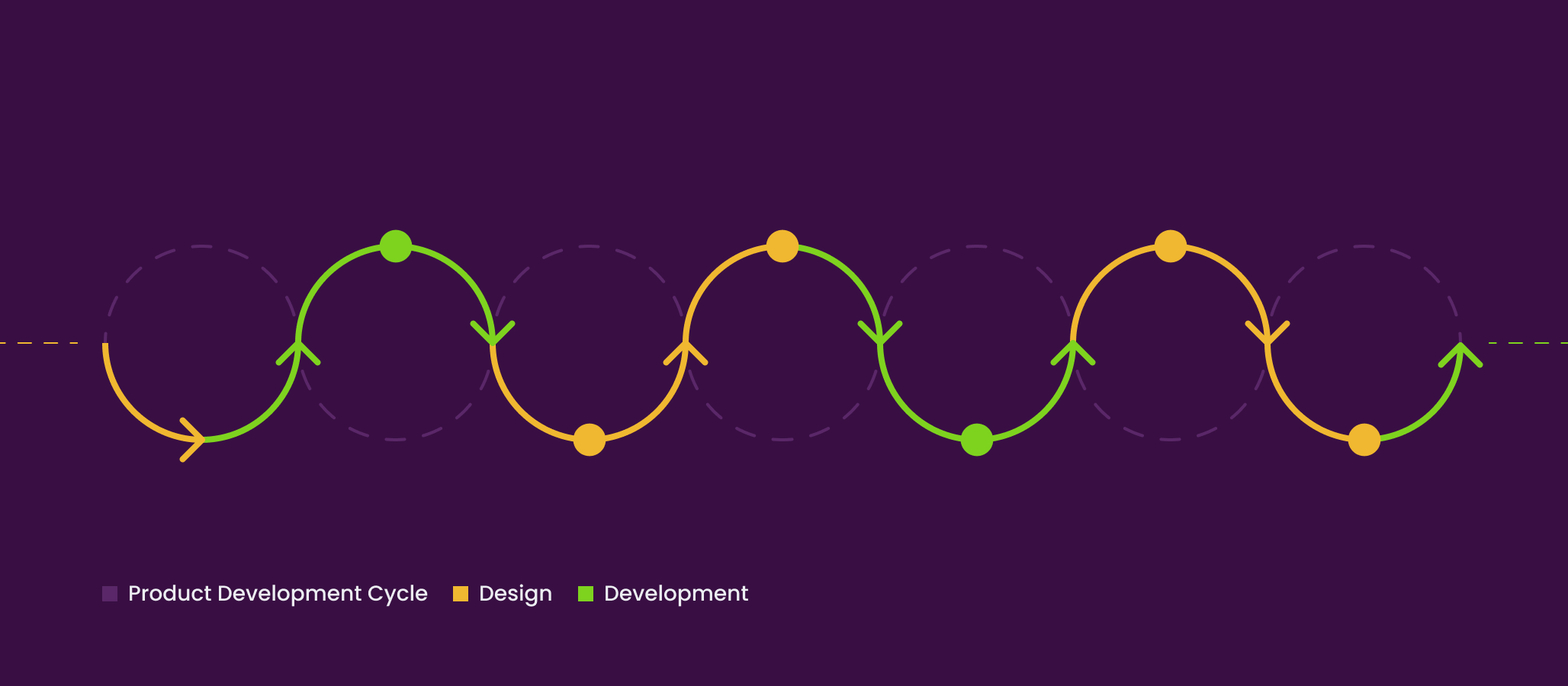A better way to build togetherCopied!
While we’re not actually tossing hot potatoes around the office (as fun as that would be), in theory the Hot Potato Process is very much like the classic game it got its name from. Tasks are passed quickly and with purpose between team members, but unlike the game, where the goal is to avoid being stuck with the potato, this process is fueled by teamwork.
The “potato” — in this case a design, a concept, or feature — goes back and forth between team members, evolving and improving with each "pass”, as both sides work in their technical feedback, creative ideas, or user input. This process continues until the product is ready for the next stage, whether that’s testing, deployment, or client approval.
My go-to workflowCopied!
In a fast-paced agency environment, you need to balance creativity and speed to meet deadlines, all while coordinating across teams. The Hot Potato Process makes the process easier as it keeps projects moving, at the same time improving the work’s quality by using an iterative approach. It allows us to let ideas grow and change through ongoing feedback, allowing speed and creativity to develop together instead of competing.
What makes this approach work for meCopied!
Discussion drives growth Ideas are shared and improved in real-time, preventing potential problems from snowballing down the line. This method makes for a consistent final product, since design and development are working hand-in-hand from start to finish.
Adapting as we go If a "potato" isn't working we can quickly pivot and find a better solution without having to take the process 10 steps back. The regular check-ins support a steady progress and make it easy to adapt, so we can always address issues on the spot without losing track of the bigger picture.
Aligned goals The ongoing communication between teams ensures the design vision stays on the same page as the technical implementation, and it becomes better when it’s informed by the feedback and technical insights of the engineers.
Collective ownership Everyone’s expertise plays an equally important role in shaping the final product, with each team member’s skills being valued and incorporated. This creates a sense of accomplishment in building something together which in turn also helps build trust within the team, and everyone feels fulfilled by the success of the product.
While the faster pace at which we can move a project forward has clear benefits, my favorite part of the process is the constant collaboration and how it leads us to create better products. By breaking down the barriers between design and development that are often present in a traditional handoff process, the Hot Potato Process allows everyone a chance to contribute, and for me the result is the perfect way to turn a vision into reality.
 Image 1 - Visualization of the process
Image 1 - Visualization of the process
How we use it at PixionCopied!
Every project kicks off with the Design Team turning ideas into mock-ups and prototypes that serve as the conversation starters about functionality, usability, and aesthetics. Once the solid foundation is agreed upon by everyone, the “potato” is passed to the Engineering Team, and this is where the focus shifts to bringing the design to life. Engineers contribute at this stage by adding their code and providing their insights, such as an evaluation of the feasibility and flagging of any technical challenges. This ensures that any potential roadblocks are dealt with early on.
With these insights in place, the "potato" returns to the Design Team for “cooking” and the product starts to take real shape. Adjustments are made to the visual design, while ensuring the product remains user-friendly and aligns with the technical notes made by the Engineering team. The process then continues with bouncing ideas back and forth throughout the entire cycle, each pass of the potato bringing the product closer to its final form by incorporating new ideas, solving problems, and addressing feedback from everyone.
The iterative loop keeps the project dynamic so as it reaches the final stages of user testing, moves to our Quality Assurance team, or is sent off for client review, the Hot Potato Process allows us to have quick adjustments based on feedback. At the final stage, the “potatoes” have passed through many rounds of thoughtful collaboration that the end result is as polished as possible.
Why partnering with us makes a differenceCopied!
At Pixion we love to make ideas come to life. Our adoption of The Hot Potato Process reflects who we are as an agency – adaptable and progressive. If you’re looking for a team that loves to innovate we’re the ones to toss your project to. Reach out to us and let’s make it happen!